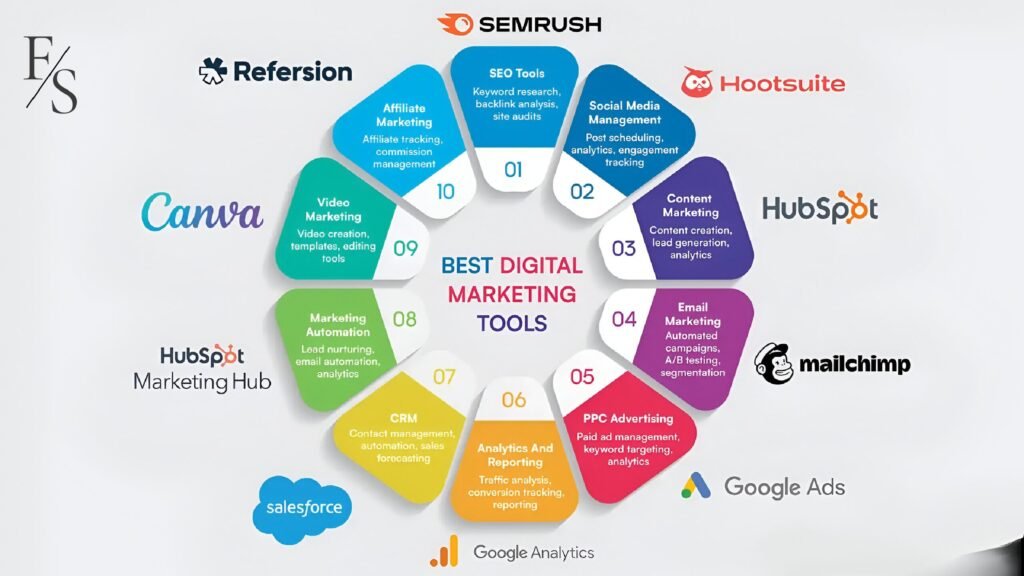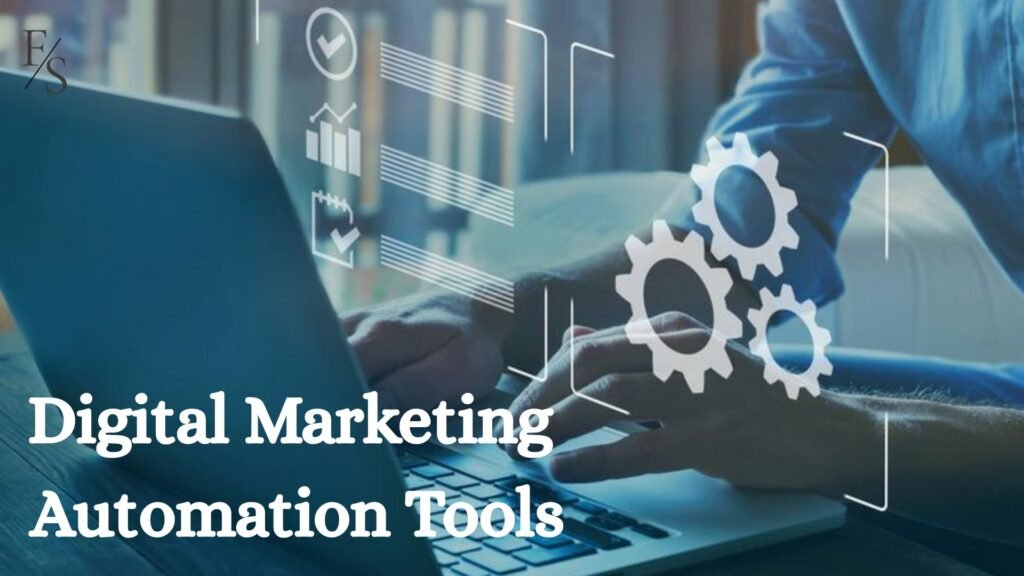A Beginner’s Guide to Turning Leads into Loyal Customers

In the ever-evolving world of digital marketing, attracting potential customers is only the first step—what truly drives long-term success is your ability to guide those leads through a carefully crafted journey that transforms curiosity into commitment. This is where the digital marketing funnel becomes your most valuable tool.
By understanding each stage—from creating awareness and building interest to driving conversions and nurturing loyalty—you can design a seamless experience that meets your audience’s needs at every touchpoint. The digital marketing funnel explained in this guide highlights the importance of offering value, building trust, and delivering personalized content that speaks directly to your prospects’ challenges and goals.
As you move leads down the funnel, your focus should shift from educating and engaging to delighting and retaining, ensuring that customers don’t just make a one-time purchase but become vocal advocates for your brand. With the digital marketing funnel explained clearly, mastering this process means you’re not only generating sales—you’re creating relationships that fuel sustainable growth.
What Is a Digital Marketing Funnel?
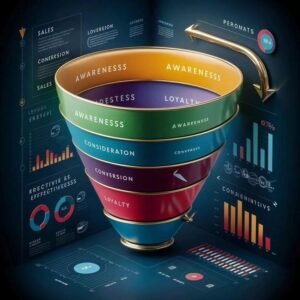
A digital marketing funnel is a strategic framework that maps out the step-by-step journey a potential customer takes from first discovering your brand to becoming a loyal, repeat buyer. It serves as a visual model that helps businesses understand how to attract attention, nurture interest, and ultimately convert leads into paying customers.
The term “funnel” reflects the natural narrowing of this process—many people might see your ad or content, but fewer will progress through the stages of interest, consideration, and conversion. What makes the digital marketing funnel powerful is its ability to align your messaging, content, and tactics with your audience’s mindset at each stage.
At the top, your goal is to build awareness and capture attention; in the middle, it’s about educating and building trust; and at the bottom, it’s about closing the sale and encouraging repeat engagement. A well-designed funnel doesn’t stop at purchase—it continues to delight customers post-sale, turning them into advocates who promote your brand to others. In short, with the digital marketing funnel explained, you’ll see that it’s more than just a sales strategy—it’s a customer experience blueprint that guides your entire online marketing approach.
1.Awareness Stage – Getting Noticed

The awareness stage marks the top of the digital marketing funnel and is the crucial first step in guiding a potential customer toward your brand. At this point, your audience may not even realize they have a problem or need, let alone know that your business offers a solution. Your goal in this stage is simple yet powerful: get noticed.
This means creating engaging, informative, and eye-catching content that introduces your brand in a natural and helpful way. Whether it’s through search engine results, viral social media posts, paid ads, videos, or shareable blog content, your messaging should focus on educating and inspiring curiosity without pushing for a sale.
the digital marketing funnel explained, it becomes clear that showing up in the right place at the right time with content that speaks to your audience’s questions, challenges, or aspirations is key to guiding them through their journey. Having the digital marketing funnel explained allows you to align your strategy with each stage of the customer journey, from awareness to advocacy, ensuring a more effective and meaningful connection with your audience.
Consistency and relevance are key—every touchpoint should reflect your brand’s voice and value proposition. When done effectively, the awareness stage lays a strong foundation for trust and connection, making it far more likely that your audience will remember you and move deeper into the funnel when they’re ready to explore solutions. With the digital marketing funnel explained, you gain clarity on how each interaction—from the first ad to the first click—contributes to a cohesive journey. Understanding the digital marketing funnel explained ensures your efforts are both strategic and impactful from the very first impression.
Tactics:
-
Social media posts
-
SEO blog content
-
Paid ads (Google, Facebook)
-
YouTube videos
-
Infographics
Interest Stage – Sparking Curiosity

The interest stage is a pivotal point in the digital marketing funnel where awareness begins to evolve into genuine engagement. At this stage, your audience has discovered your brand and is now interested enough to explore what you offer. They’re not ready to buy yet, but they’re curious—they want to know if your solution fits their needs. With the digital marketing funnel explained, this stage is all about nurturing curiosity and building trust to guide prospects toward the next step in their journey.
This is your opportunity to build a relationship by offering meaningful, relevant content that educates, informs, and addresses their questions without any sales pressure. Think of this phase as the start of a conversation, not a pitch. Email newsletters, insightful blog posts, lead magnets like guides or templates, how-to videos, and social media interactions all play a role in showing your audience that you understand their problems and have the expertise to solve them. With the digital marketing funnel explained, it’s clear that building trust during this stage is essential for moving prospects closer to conversion and nurturing long-term relationships.
The goal is to position your brand as a helpful and trustworthy resource, making it easy for potential customers to stay connected and keep learning more. When done effectively, the interest stage—part of the digital marketing funnel explained—transforms casual viewers into warm leads who are one step closer to trusting your brand and considering your solution as the right choice.
Tactics:
-
Email newsletters
-
Free resources (eBooks, guides)
-
Engaging videos
-
Retargeting ads
-
Landing pages
3.Consideration Stage – Educating Your Audience

The consideration stage is where curiosity turns into serious evaluation—your audience now understands their problem and is actively exploring potential solutions, including yours. This is the stage where trust matters most, and your job is to educate your prospects in a way that positions your brand as the ideal choice.
People are comparing features, reading reviews, analyzing pricing, and seeking reassurance that your product or service is the right fit. To guide them through this decision-making process, your content must go beyond surface-level information. With the digital marketing funnel explained, it’s clear that this stage requires in-depth resources like product demos, comparison guides, case studies, client testimonials, detailed blog posts, webinars, or explainer videos. These assets should directly address common questions, reduce doubts, and demonstrate how your offering delivers real, measurable value.
Personalization becomes important here—segmenting your audience and tailoring your messages based on their behavior or interests helps create stronger relevance and deeper impact. At its core, the consideration stage is not just about proving your worth—it’s about empowering your audience with the clarity and confidence they need to take the next step. With the digital marketing funnel explained, it becomes evident that educating with empathy and expertise during this stage doesn’t just earn attention—it earns trust and paves the way for conversion.
Tactics:
-
Case studies
-
Product comparison pages
-
Webinars
-
Free trials
-
Customer testimonials
4.Conversion Stage – Turning Leads into Customers

The conversion stage is the most critical point in the digital marketing funnel—where a well-nurtured lead finally makes the decision to become a paying customer. At this stage, all your prior efforts in building awareness, generating interest, and providing education come together to influence action.
Your audience is ready to buy, but even now, hesitation can creep in—so your job is to eliminate friction, reinforce value, and make the buying process as smooth and reassuring as possible. This means having clear calls-to-action, intuitive website navigation, trust signals like customer reviews or guarantees, and perhaps even time-sensitive incentives such as discounts, bonuses, or free trials. Personalization plays a powerful role here; tailored offers and targeted follow-ups can nudge hesitant buyers across the finish line.
Every interaction—whether it’s a checkout page, a sales email, or a landing page—should reinforce that they’re making the right decision by choosing you. But remember, conversion isn’t just about closing a sale—it’s about delivering an experience that sets the tone for a long-term relationship. When done right, the conversion stage not only boosts your revenue—it creates a positive, memorable customer moment that can lead to loyalty and advocacy down the road.
Tactics:
-
Discounts and offers
-
Clear calls-to-action
-
Limited-time promotions
-
Strong product pages
-
Easy checkout process
5.Loyalty & Advocacy Stage – Creating Repeat Buyers

The loyalty and advocacy stage is where the real magic of long-term business growth happens—because the journey doesn’t end with a sale, it begins again with customer retention and relationship building. At this stage, your focus shifts from acquiring new customers to nurturing existing ones and turning satisfied buyers into loyal supporters and brand advocates.
Repeat customers are more cost-effective to retain and often spend more over time, making this stage not just a bonus, but a strategic priority. Delivering exceptional post-purchase experiences is key—think personalized follow-ups, loyalty programs, exclusive offers, proactive customer support, and meaningful engagement through email or social media.
Encourage feedback, show appreciation, and continue to deliver value even after the sale. When customers feel seen, heard, and valued, they’re more likely to recommend your brand to others, leave positive reviews, and share their experience—creating powerful word-of-mouth marketing. Digital marketing funnel explained: advocacy doesn’t happen by accident; it’s the result of consistent, authentic interactions that deepen trust. Ultimately, this stage transforms one-time buyers into lifelong customers and enthusiastic brand ambassadors, completing the funnel and feeding it with new, high-quality leads organically.
Tactics:
-
Loyalty programs
-
Referral incentives
-
Exclusive content
-
Follow-up emails
-
Social proof sharing
Why the Funnel Matters
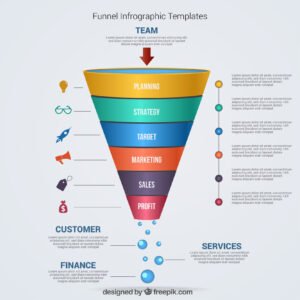
Understanding and leveraging the digital marketing funnel is essential because it gives structure and strategy to how you attract, engage, convert, and retain customers in today’s crowded online landscape. Without a clear funnel, marketing efforts can become scattered, reactive, and ineffective—leading to lost leads, inconsistent messaging, and missed opportunities for growth.
The digital marketing funnel explained provides a clear roadmap that aligns your content, campaigns, and communication with where your audience is in their buying journey, allowing you to deliver the right message at the right time. With the digital marketing funnel explained, you can focus on building meaningful relationships—not just driving transactions—by guiding people from awareness to action through value-driven touchpoints. Most importantly, the digital marketing funnel explained transforms marketing from guesswork into a purposeful, measurable process.
By analyzing each stage of the funnel, you can identify gaps, improve performance, and optimize for better results. Whether you’re a solo entrepreneur or part of a larger marketing team, the funnel ensures you’re not just getting attention—you’re creating meaningful customer experiences that lead to long-term success.
-
Target the right content to the right audience at the right time
-
Optimize conversion rates
-
Nurture leads more effectively
-
Increase ROI from marketing efforts
Final Thoughts

The digital marketing funnel is more than just a concept—it’s a proven framework that empowers businesses to guide potential customers through every stage of their journey with purpose and precision. From building awareness and sparking interest to driving conversions and nurturing long-term loyalty, each phase plays a vital role in turning casual browsers into devoted brand advocates.
In a world where consumer attention is fragmented and competition is fierce, having a well-defined funnel allows you to deliver targeted, personalized experiences that not only capture attention but build trust and drive sustainable growth.
Whether you’re just starting out or looking to refine your current strategy, understanding and implementing a digital marketing funnel ensures that your marketing efforts are aligned, efficient, and impactful. Remember, it’s not just about getting more clicks or leads—it’s about creating meaningful connections that turn into lasting customer relationships.
Author : FIDHASHERIN VP
